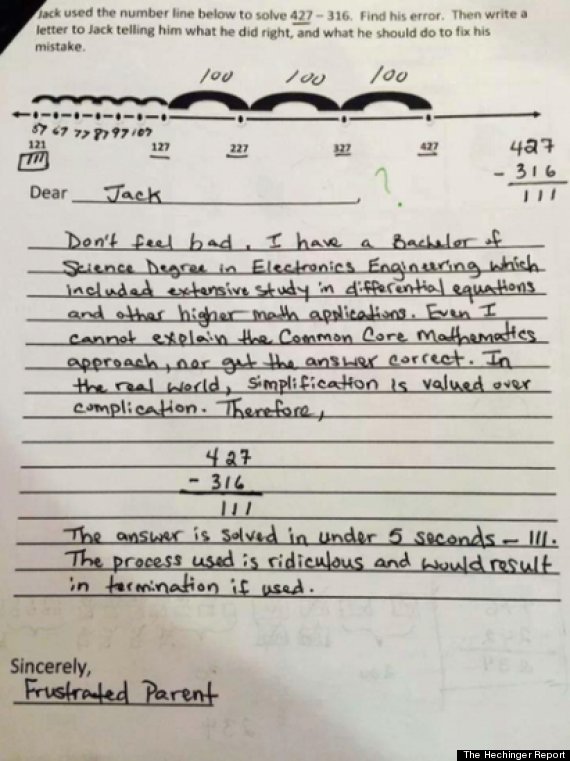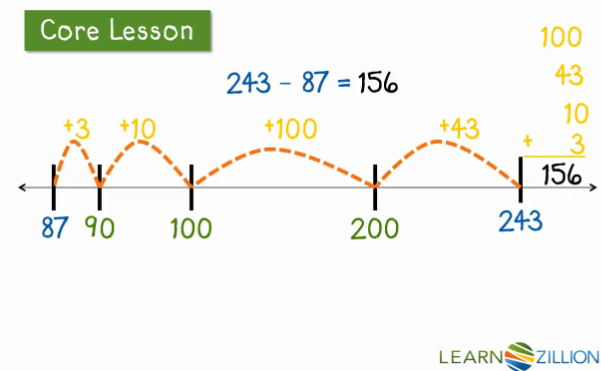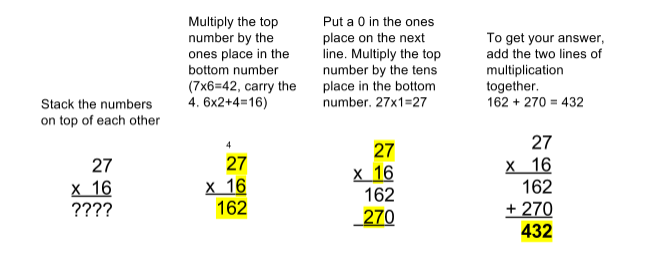What is the Common Core?
The Common Core State Standards are a new set of academic standards adopted by 43 states . The standards are meant to prepare students for college and careers and to make the US more competitive academically. They're benchmarks for what students should know and be able to do in math and language arts from kindergarten through senior year of high school.
The Common Core includes a lot of those benchmarks at each grade level, but there are a few unifying themes. Language arts standards focus on basing arguments on evidence. Students will write fewer personal narratives and more opinions. They'll also be asked to read more nonfiction. In math, the standards focus on fewer concepts, but in more depth.
States used to set their own academic standards, and they could vary widely in rigor. The goal of common standards is to make sure all public school students are prepared for college and for jobs when they graduate from high school, regardless of where they live. Writing assignments are more about evidence-based arguments and less on personal narratives like "What I did on my summer vacation." Math standards focus on fewer topics in more depth that are meant to progress logically from grade to grade.
Two state groups, the National Governors Association and Council of Chief State School Officers, created the Common Core standards in 2009 and 2010. But they're in the news now because states are beginning to use the Common Core as the basis for state tests. As the standards move from theory to reality, they're becoming better-known and, often, more controversial among parents and legislators. The Common Core standards are more challenging than what most states used to use, and kids aren't doing as well on these tests.
Who created the Common Core?
Two nonprofit groups led the effort to write the new standards, and others contributed. One, the Council of Chief State School Officers, represents the top K-12 education officials from all US states and territories. The other is the National Governors Association. Achieve, a nonprofit education reform group, also helped. The groups brought in the two major teachers' unions, the National Education Association and the American Federation of Teachers, as well as other national organizations that represent teachers of math and English.
Writing the standards took about 18 months, beginning with a report from the three main groups involved in late 2008. A draft was released for public comment, and a committee of experts also provided comments. The standards were finalized in June 2010 with a report explaining the groups' reasoning.
What problems is the Common Core trying to solve?
Two big, complex problems. First, American students are middle-of-the-road at best on academic skills when compared to other countries on international tests. Policymakers and business leaders hope that tougher standards will help the US catch up globally.
Second, under the old system, it was hard to compare students in different states. Until now, each state set its own standards for what students should understand at each grade level, and each state had a different definition for what it meant to be "proficient" in math and reading.
The US Education Department's statisticians found a lot of variation when they mapped state standards onto scores on the National Assessment of Educational Progress. That test is called the "Nation's Report Card" — a standardized test students take nationally every few years. They also found that even students who met state goals might not actually be doing all that well, since the national exam set the bar higher than states did. In the federal government's eyes, all states had standards that were too low, and there was too much variation on how low they were.
Most education systems don't work that way, and it makes it difficult for states to collaborate to improve education nationally. The Common Core is supposed to solve this by holding students in the majority of states to the same, higher standards.
Why do Common Core math problems look so weird?
In the past, "students had this sense that math was some kind of magical black box," says Dan Meyer, a former high school math teacher studying math education at Stanford University. "That wasn't good enough."
The Common Core wants to get kids beyond rote memorization of how to do math and towards a deeper understanding of how math actually works. This has led to some problems that have gone viral on the internet as frustrated parents vent over bizarre-looking homework assignments:

The simple example the parent gives above is known as the standard algorithm — and, under Common Core, it will still be taught. But students are also supposed to learn other methods that try to make the underpinnings of the standard method more obvious.
Take the problem above, which uses a number line to show that subtraction is really about calculating the distance between two numbers. Students put the two numbers at opposite ends of the number line.

Then they travel from one number to the next to figure out the distance. It's 4 steps from 316 to 320, 100 steps from 320 to 420, 7 steps from 420 to 427.

Then they add the steps together: 4 + 100 + 7 = a distance of 111. LearnZillion, a company that creates lesson plans for teaching to the Common Core standards, has a 5-minute video explaining this technique. Here's what it's supposed to look like on another sample problem:

Multiplication, too, is explained visually. Most people learned to multiply two-digit numbers like this:

To better understand what's really happening here — technically, you're breaking 16 into (10 + 6), then adding (27 x 10) + (27 x 6) — another method students can use is the "area model."
Much of this is bound to confuse parents — particularly because in many cases their own math backgrounds aren't particularly strong, and so they can't step in and easily find the answers themselves. But math teachers say parents need to learn to help their kids by asking them more general questions that help them learn the principles behind the problem, rather than stepping in and solving the problem themselves.
More on the Common Core's approach to math here.
What is the federal government’s role in Common Core?
The federal government didn't write the standards, but it has promoted them. The stimulus bill included $4.4 billion in Education Department grants for states that adopted "college- and career-ready standards."
States weren't explicitly required to adopt the Common Core in order to compete for the federal money; they could have used their own standards if they proved to the Education Department that those standards prepared students for college. Nearly all of them adopted Common Core instead, and all of the states who eventually won the grants were Common Core states. Another grant program was created to help develop tests based on Common Core standards.
The federal government has other levers to promote Common Core, too. It waives some requirements of No Child Left Behind, the 2002 education reform law, for states that (among other things) adopt "college and career-ready standards" and assessments based on those standards. But Texas, Virginia, and Minnesota got waivers from the law without adopting the Common Core by proving that that their standards could prepare kids for college and careers.
What’s the case against the Common Core?
Opponents of the Common Core are a pretty varied group, as are supporters. There are some Republicans and right-leaning groups who support the Common Core (the Fordham Institute, the U.S. Chamber of Commerce, and former Florida Gov. Jeb Bush among them) and others who oppose it, particularly from the Tea Party. The Democratic party is also divided, as it often is on education reform issues: The Obama administration supports the Common Core, while teachers' unions have concerns about how it's being implemented and some on the left are opposed to continuing to emphasize standardized tests at all.
After George W. Bush expanded the federal role in education through No Child Left Behind, a growing sector of the Republican Party has returned to viewing education as a local and state responsibility. They believe local authorities are best at determining what's appropriate for children to learn in that state or community. As a result, they distrust the idea of quasi-national standards promoted by the federal government.
Some Republican governors who initially supported the Common Core have tried to walk a fine line as controversy has erupted, saying they support the standards but oppose the federal government's involvement. Others, including presumed candidates in 2016, have denounced it as a federal takeover: Sens. Ted Cruz (R-TX) and Rand Paul (R-KY) fall into that camp.
There are also Common Core opponents on the left, who worry about student privacy, the growth of standardized testing, and how the standards are being implemented. Some liberals are suspicious of the education reform movement, which encourages the growth of charter schools and minimizes the role of teachers' unions. They also don't like that Common Core continues to emphasize standardized testing. Because students are likely to perform poorly on early Common Core tests, they say that those results will be used to argue that American public schools are failing and charter schools or vouchers are the solution.
Diane Ravitch, a former Bush administration official who later turned away from the education reform movement, is one of the most prominent opponents from this line of thinking. She says she supports voluntary national standards in theory, but argues the Common Core standards are untested. She also opposes raising standards so high that students cannot meet them.
How are national standards different from a national curriculum?
Standards are about what students should know or know how to do; curriculum is about how they're taught to know or do those things. For example, the Common Core standards require second-graders to be able to contrast two versions of the same story. But teachers are free to pick what lesson plans are used to teach that skill, and states still pick what books are assigned for children to read.
Federal law prohibits the Education Department from interfering in curriculum, which is determined at the state and local level.
However, the Common Core standards are very detailed. The second-grade standard on comparing stories includes an example, although schools aren't required to use it: How the Cinderella tale differs across cultures. Some critics say that this level of detail starts the United States down a slippery slope to a single, national curriculum.
What is a Common Core assessment consortium?
Most states that have adopted Common Core standards have also joined one of two groups, called consortia, that are creating new standardized tests. Every state in each consortium will use the tests that consortium creates. The tests will measure how well students are doing at meeting Common Core standards in reading and math, which is meant to measure whether they'll be ready for college and careers by the end of high school. States will continue to administer the tests at the end of the year, just as they do now.
The federal government gave grants to two consortia to develop Common Core assessments. One is called the Partnership for Assessment of Readiness for College and Careers, the other is called Smarter Balanced. Both are nonprofit groups.
As pushback to the the Common Core increases, states are rolling back their commitment to the standard by saying they'll write their own tests rather than use the tests the two consortia create. It's a way to pull back without getting rid of the standards themselves. Some Common Core supporters are worried about that, because if states are writing their own tests, it's easy for them to define proficiency however they want — which would undercut the benefit of common standards.
How are students doing so far on Common Core tests?
Not all that well. So far, only two states, New York and Kentucky, have given their students tests on how well they're meeting Common Core standards. (They're still using their own tests, not the tests that the two consortia of states are developing. Those tests just started field testing in spring 2014 and won't be in action until the 2014-15 school year.)
Scores dropped off a cliff in both states. In New York, fewer than one-third of all public school students passed state assessments once they were aligned to the Common Core. Before the new standards, more than half of all students passed the tests.
Kentucky also saw a big drop. When the state first used Common Core assessments, the percentage of students passing dropped by more than one-third. Scores went from hovering around 70 to 80 percent to less than 50 percent.
:no_upscale()/cdn.vox-cdn.com/uploads/chorus_asset/file/2317542/Screen_Shot_2014-10-02_at_4.26.42_PM.0.png)
Supporters say the new standards are supposed to be hard. The low scores are a feature, not a bug. But unions are worried about the consequences for teachers if their students don't do well on the new tests, and are saying states should slow down on putting that part of the Common Core in action.
How many states have adopted the Common Core?
In all, 43 states currently have Common Core standards. The process for signing on has varied based on state law, but in most states, the state board of education had to vote in favor of the new standards. In other states, the state Education Department was able to make the decision on its own.

(Source: CoreStandards.org)
How many states have abandoned the Common Core?
Two: Indiana and Oklahoma.
Indiana wrote its own standards to replace the Common Core and adopted them March 24 after a tide of grassroots opposition. Oklahoma Gov. Mary Fallin signed a bill to get rid of the standards in June.
Mostly, though Common Core rollback enacted so far has been about the tests — not about the standards.
Several states have decided to write their own tests instead of participating in the two state consortia that are writing shared assessments. They're concerned about the cost of the new tests, or they're sensitive to concerns from critics from the Tea Party, and are scaling back their Common Core commitments.
Besides Indiana, the states that have scaled back their participation in state consortia in some way are Alabama, Alaska, Florida, Georgia, Kansas, Kentucky, Oklahoma, Pennsylvania, South Carolina, and Utah.
What does the Common Core have to do with college?
Quite a lot. The Common Core is supposed to make sure that students show up for college ready for college-level work. That's rarer than you might think. More than half of all students at community colleges, and more than 20 percent at four-year college, need remedial classes. A big part of the Common Core's success will rely on getting college faculty and administrators to agree that students who meet the standards really are college-ready. (Getting higher education on board with K-12 standards was a requirement for states participating in the Education Department's competitive grant program, Race to the Top.)
There's early evidence in Kentucky that the college-readiness component is working. Kentucky is the Common Core poster child because it was early to implementing the new standards. The percentage of students who needed remedial courses in math has dropped by 38 percent since 2009. In language arts, it's an even more dramatic change: half as many students need remedial courses as they did five years ago.
A Common Core test will even be used for college admission — sort of. The SAT is getting a revamp in 2016, and the new test is supposed to be aligned to the Common Core. Like the Common Core, it will focus more on evidence-based arguments, and it will ask students to deal with fewer math questions but in more depth. The ACT is already aligned to the Common Core.
You didn't answer my question!
This is very much a work in progress. It will continue to be updated as events unfold, new research gets published, and fresh questions emerge.
So if you have additional questions or comments or quibbles or complaints, send a note to Libby Nelson: libby@vox.com.
Where can I learn more about the Common Core?
A good place to start is reading the standards themselves. The Hechinger Report is working on an ongoing special report on the Common Core and its implementation in eight states. It gives a good look at how implementation is going on the ground floor — in the classroom.
For a look at international competitiveness, start with Amanda Ripley's The Smartest Kids in the World (And How They Got That Way). While it doesn't solely address standards, it's a broad look at how America does things differently and why that might be leading to stagnation on international benchmarks. For a look at the other side, Diane Ravitch's Reign of Error argues that American schools aren't broken and attacks much of the reform movement, including Race to the Top and its use in promoting the Common Core standards.
The generally conservative Fordham Institute has written extensively in favor of the Common Core, including several reports on implementation, in school districts and in Ohio. The conservative American Enterprise Institute has generally been more skeptical, particularly on implementation. Their concerns are here.
How have these cards changed?
This is a running list of substantive updates, corrections, and additions to this card stack. These cards were last updated on April 11, 2014. Here is a summary of edits:
- April 11: The title of card 8 was changed from "What is a Common Core state consortium?" to "What is a Common Core assessment consortium?"
- April 21: Added the card, "Why do Common Core math problems look so weird?"
- June 18: Updated the card "How many states have abandoned the Common Core?" to reflect Oklahoma's departure. (Changes also made to "What is the Common Core?" and "How many states have adopted the Common Core?")
/cdn.vox-cdn.com/uploads/chorus_image/image/62283063/72550972_f48d1ea723_b.0.1542049708.0.jpg)